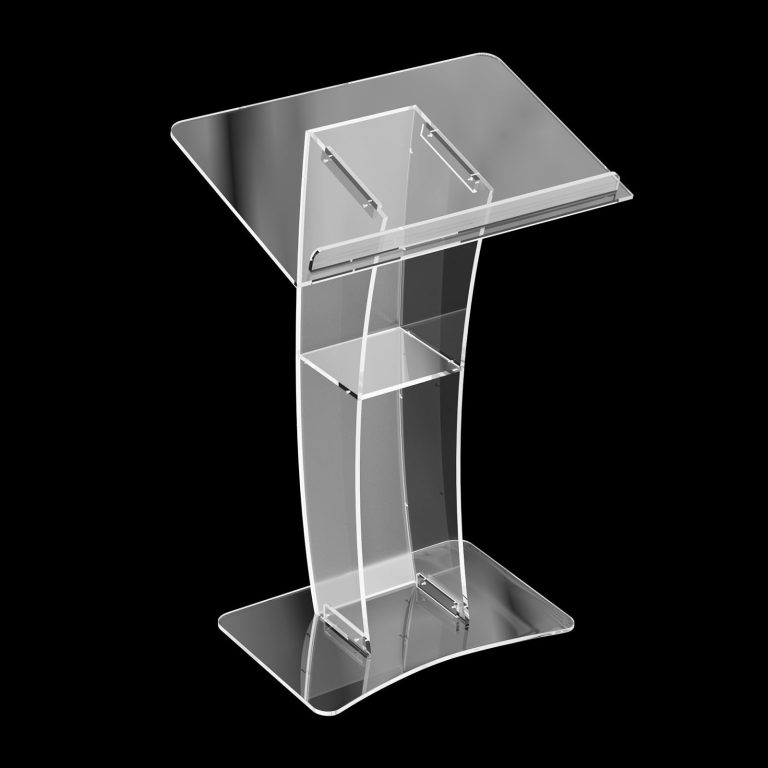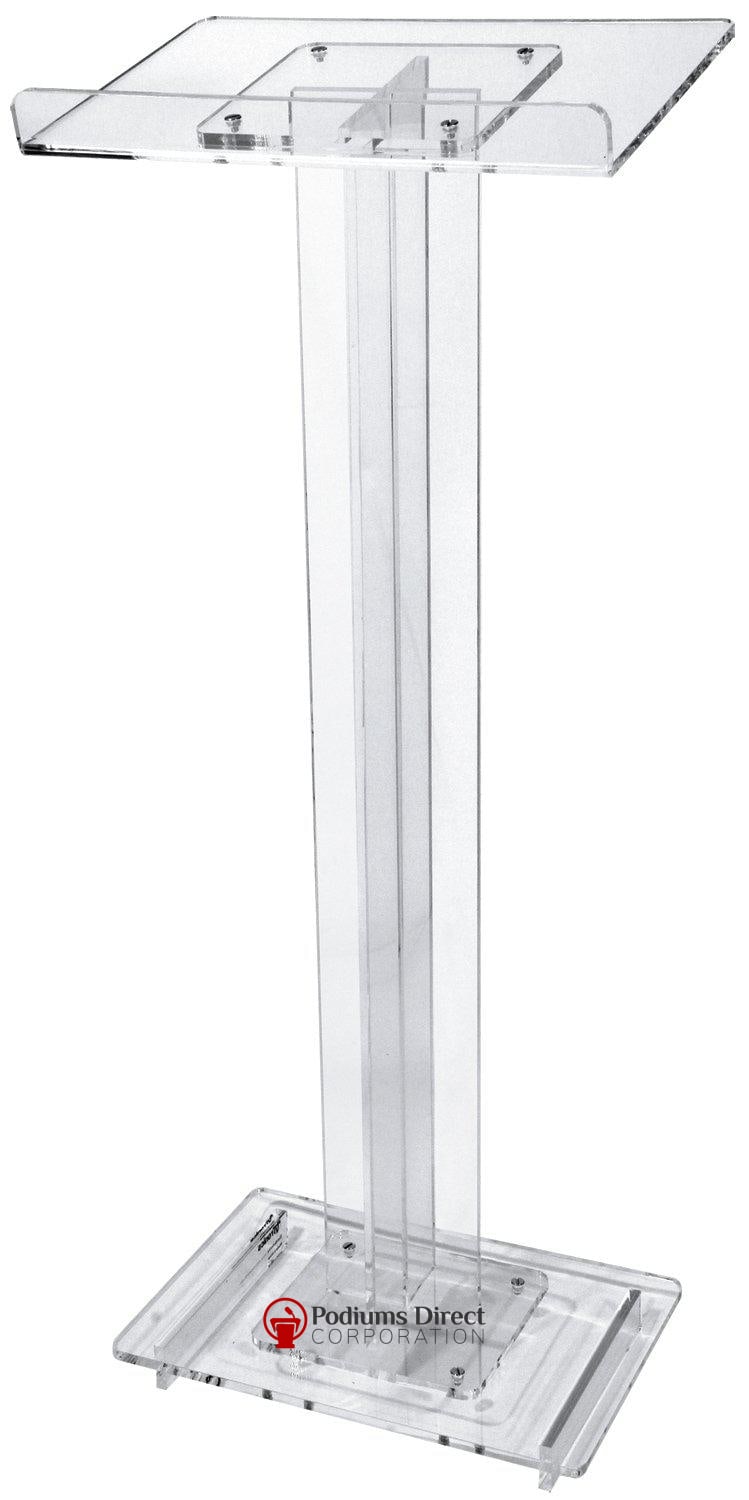How Does a Podium Work: Unveiling Its Key Features and Benefits
A podium, often referred to as a lectern or stand, is a cornerstone in the realms of public speaking, lectures, meetings, and social gatherings. It serves not only as a practical tool but also as a psychological aid for speakers. Understanding how a podium works requires an exploration of its physical design, features, and its role in enhancing communication. This blog post delves into the mechanics, functionality, and symbolic importance of podiums in various contexts.
Understanding the Podium
A podium is a raised platform or stand where a speaker positions themselves while addressing an audience. Its design typically includes a flat or slanted surface to hold notes, documents, or devices. While it might seem like a simple structure, its utility extends far beyond its physical form. The podium offers functionality, boosts confidence, and lends professionalism to the speaker.
1. The Physical Structure of a Podium
At its core, a podium is a raised platform or stand designed to support a speaker while addressing an audience. Its basic structure typically includes:
- Flat Surface: A podium provides a flat surface to hold notes, books, laptops, or tablets, keeping the speaker’s materials organized and accessible.
- Height: It is usually elevated to ensure visibility and prominence for the speaker, making them the focal point of attention.
- Base and Stability: The podium’s base is weighted or designed to provide stability, ensuring it doesn’t wobble or tip over during use.
- Optional Features: Modern podiums may include integrated microphones, lights, screens, or adjustable height mechanisms to suit different needs and environments.
How Does a Podium Work?
1. Enhancing Speaker Visibility
One of the primary purposes of a podium is to elevate the speaker physically and metaphorically. Standing behind a podium:
- Makes the speaker more visible to the audience, especially in large venues or crowded spaces.
- Establishes the speaker as the central figure in the room, drawing attention to them as the authority or focal point.
In settings like lectures, meetings, or public gatherings, this elevation ensures that the speaker commands the room’s attention.
2. Providing a Functional Workspace
A podium’s flat or angled surface is designed for practical use. It:
- Holds notes, cue cards, laptops, or scripts, allowing the speaker to refer to their material without juggling items in their hands.
- Often integrates microphone stands, lighting, or even multimedia controls for slide presentations, making it a command center for presentations.
- In modern podiums, adjustable height features ensure the surface is at a comfortable level for speakers of varying heights.
3. Acting as a Psychological Anchor
For many speakers, especially those new to public speaking, a podium provides a sense of security. Standing behind it can:
- Serve as a barrier, reducing feelings of vulnerability.
- Anchor the speaker in place, minimizing nervous movements.
This psychological benefit often boosts the speaker’s confidence, allowing them to focus on their delivery and interaction with the audience.
4. Amplifying the Speaker’s Voice
Many podiums are equipped with microphone systems, ensuring that the speaker’s voice reaches every corner of the room. This feature is critical in large venues, outdoor events, or settings where acoustics may not be ideal. Built-in sound systems or compatibility with external audio devices make podiums a vital part of modern communication setups.
5. Projecting Professionalism and Authority
A podium is symbolic. It represents authority, structure, and professionalism. In formal settings like conferences, board meetings, or academic lectures, standing behind a podium signals to the audience that the speaker is well-prepared and in control.
2. Podium Functions in Different Contexts
Podiums are versatile tools that adapt to the needs of various settings, from formal presentations to casual gatherings. Here’s how they work in different contexts:
a. Public Speaking
In public speaking, a podium serves as both a functional and symbolic object:
- Focus Point: The podium elevates the speaker, drawing the audience’s attention.
- Support for Materials: Speakers can place their notes or cue cards on the podium, allowing them to refer to key points without holding anything in their hands.
- Confidence Booster: Many speakers feel more comfortable standing behind a podium, as it provides a physical barrier that can reduce nervousness.
- Integration with Audio Systems: Podiums often come equipped with built-in microphones and sound systems to amplify the speaker’s voice, ensuring clear communication with larger audiences.
b. Lectures and Academic Settings
In educational settings, podiums are an integral part of delivering structured and effective lectures:
- Organization: Professors or lecturers can arrange teaching materials like books, laptops, and presentation clickers on the podium for seamless delivery.
- Enhanced Communication: Many podiums in classrooms feature technology like document cameras, projectors, and monitors to aid visual learning.
- Control: In tech-enabled classrooms, podiums serve as control centers for managing audiovisual equipment, lights, or even recording devices.
c. Meetings and Conferences
During meetings and professional conferences, podiums are instrumental in:
- Facilitating Presentations: They act as a station for presenters to deliver speeches, proposals, or data insights.
- Encouraging Formality: A podium adds a sense of professionalism and structure to the event.
- Interactive Features: Modern podiums include microphones, clickers, and connectivity ports for seamless integration with presentation tools like slideshows.
d. Social Gatherings and Get-Togethers
In less formal settings, podiums play a role in maintaining order and focus:
- Announcements and Toasts: At weddings, birthday parties, or community events, the podium becomes a platform for delivering heartfelt speeches or making announcements.
- Practical Convenience: It provides a place for speakers to rest their drink, notes, or props while speaking.
- Symbol of Leadership: Standing at the podium signals authority and draws attention to the speaker.
3. Technological Advancements in Podiums
The modern podium has evolved far beyond its traditional wooden design. Technology has significantly enhanced its functionality:
- Integrated Audio Systems: Built-in microphones and speakers eliminate the need for separate audio equipment.
- Interactive Screens: Some podiums feature touchscreens that allow speakers to navigate presentations or display real-time data.
- Adjustable Height: Electric or manual height-adjustment mechanisms cater to speakers of different statures.
- Portability: Lightweight, foldable podiums are available for events requiring quick setup and mobility.
- Remote Control Features: Advanced podiums include wireless controls for projectors, lights, and other audiovisual equipment.
4. Psychological Impact of Using a Podium
A podium does more than just provide physical support; it also plays a significant role in the psychology of public speaking:
- Confidence and Authority: Standing behind a podium naturally gives the speaker a sense of control and authority, which translates to more confident delivery.
- Barrier Reduction: For nervous speakers, the podium acts as a barrier, reducing feelings of vulnerability.
- Symbol of Focus: The podium draws attention to the speaker, helping the audience concentrate on the message.
5. Symbolism of the Podium
The podium carries a symbolic weight that goes beyond its practical use:
- Leadership: Occupying the podium signifies authority and leadership, making it a powerful tool in persuasive communication.
- Professionalism: In formal events, the podium underscores the significance of the occasion.
- Inclusivity: By providing a focal point, the podium ensures that every speaker has a chance to be heard clearly and equally.
6. Tips for Effectively Using a Podium
Tips for Using a Podium Effectively
To maximize the benefits of a podium, speakers should keep the following tips in mind:
- Prepare in Advance:
- Familiarize yourself with the podium’s features, such as microphone settings and height adjustments.
- Organize your materials on the podium’s surface for easy access during your speech.
- Maintain Good Posture:
- Stand confidently behind the podium, avoiding slouching or leaning too heavily on it.
- Use gestures naturally, occasionally stepping to the side to connect directly with the audience.
- Utilize Technology Wisely:
- Test microphones, screens, or other integrated tools beforehand.
- Keep backup materials, like printed notes, in case of technical issues.
- Engage with the Audience:
- Avoid hiding completely behind the podium; maintain eye contact and interact with your listeners.
- Use the podium as a base but not as a crutch—move around when appropriate to keep the audience’s attention.
- Practice:
- Rehearse using a podium similar to the one you’ll use during your actual presentation.
- Practice gestures, transitions, and handling materials to ensure smooth delivery.
- Organize Materials: Keep your notes or slides in order, so you don’t fumble during your presentation.
- Adapt to the Setting: For informal gatherings, use the podium more casually, while in formal settings, project professionalism and authority.
7. Challenges and Limitations of Podiums
While podiums offer numerous benefits, they can also present some challenges:
- Over-Reliance: Some speakers may become overly dependent on the podium, restricting their movement and reducing audience engagement.
- Visibility Issues: In large rooms, the podium can obscure a speaker’s gestures or lower body, limiting the effectiveness of body language.
- Space Constraints: Smaller podiums may not accommodate all necessary materials, leading to clutter.
8. The Future of Podiums
As technology advances, podiums are becoming smarter and more versatile:
- AI Integration: Future podiums may include AI-driven features like real-time speech analysis, audience feedback, or teleprompter systems.
- Sustainability: Environmentally friendly podiums made from recycled materials are gaining popularity.
- Augmented Reality (AR): AR-enabled podiums could allow speakers to interact with virtual elements in real-time.
Why Podiums Matter
Podiums play a crucial role in communication and presentation for several reasons:
- Structure: They provide a defined space for the speaker, creating order and focus in any setting.
- Support: Both physically, by holding materials, and psychologically, by boosting the speaker’s confidence.
- Symbolism: They elevate the importance of the message and the speaker, emphasizing the occasion’s formality or significance.
In an age dominated by technology, the podium’s relevance endures. Its ability to integrate modern tools while serving its traditional purposes ensures it remains indispensable in public speaking, education, and beyond.
Conclusion
A podium is much more than a simple stand; it’s a tool that enhances communication, builds confidence, and signifies authority. Whether used in public speaking, academic lectures, corporate meetings, or social gatherings, podiums adapt to the needs of the speaker and the audience. As technology evolves, the podium continues to play a vital role in bridging the gap between speakers and their audiences, ensuring clarity, engagement, and professionalism in every interaction.




